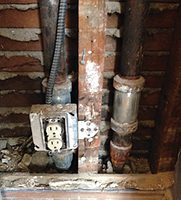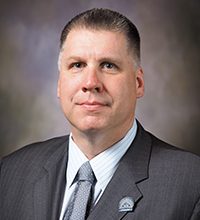Radiant cooling

I installed my first radiant heating project over 25 years ago. Since then, I have designed and installed several hundred radiant projects. We have done small sun rooms, 30,000-square-foot mansions, commercial snowmelt projects, and everything in between. Until recently, I have never designed or installed a radiant cooling project. We currently have four such systems in various stages of construction.
While I have been aware of radiant cooling for some time, I have never jumped into the game for one primary reason: the lack of an off-the-shelf residential-scaled radiant cooling control. That is no longer the case. I know of at least two controls manufacturers, tekmar and HBX, with residential radiant cooling controls.
Certainly, radiant cooling is not new. It has been done for many years in the commercial realm. These large commercial systems have the DDC controls, sensors, PLCs and control valves required to operate a radiant cooling system. It has been hard to scale this down to the residential market at a reasonable cost until recently.
Three of my radiant cooling projects are in large custom homes ranging from 10,000 to 28,000 square feet. These projects will feature commercial DDC control systems that can easily handle the radiant cooling components. The challenging project is a relatively small weekend vacation home on the Eastern Shore of Maryland.
This house has a little over 2,000 square feet of living space. The construction is concrete block and glass. The stained concrete floors are ideal for both radiant heating and cooling. The large expanse of west facing glass brought radiant cooling into the discussion in the design phase. The issue was the solar gain in the afternoon. The concrete floors would be exposed to direct solar radiation all afternoon. This solar energy would be soaked up by the concrete mass only to be re-radiated back into the living space causing the west facing rooms to be uncomfortably warm.
The geo-based mechanical system has two air handlers that can accommodate the entire sensible load, including the solar gain. By adding radiant cooling to the design, we could now capture this solar energy and transfer it to the ground loop before it can “charge” the slab and radiate heat into the living space. The added benefit is the comfort of radiant cooling, for the same reasons that radiant heating is comfortable. By surrounding the building occupants with a mass of concrete that is lower than their skin temperature, the radiant cooling gives a sense of cool comfort.
Hot water and chilled water are provided by a ClimateMaster water-to-water geo unit. A buffer tank prevents short cycling due to micro-loads. Two water-to-air units provide second stage heat, second stage cooling, and de-humidification. These units are two-stage and will run on low stage primarily to de-humidify the air. The geo loop field consists of four 360-feet vertical boreholes piped with Rau-geo PEX with two loops per bore hole. We always use 1.2 high-conductivity grout in our bore holes. My feeling is you only have one chance to do it right. A Taco Viridian ECM variable speed pump distributes the glycol solution through the geo loop field to the three geo units. The flow will vary depending on the load and on how many heat pumps are calling.
To maximize the capacity of the radiant cooling, ½-inch Rehau PEX tubing was piped at 6-inch and 9-inch o.c., depending on the room and the load. The stained concrete floors optimize the heat transfer in both heating and cooling modes as there are no floor coverings to inhibit heat transfer.
With radiant cooling, as with any chilled water system, care must be taken to insulate all exposed chilled water piping, valves and manifolds or you could have condensation, dripping and possibly mold. We used 1-inch wall closed cell polymer insulation. All joints were glued and taped. We used extended stem ball valves to facilitate the piping insulation and eliminate a common condensation point.
Unlike a chilled water system, which will typically run at 44° supply water temperature (SWT), a radiant cooling system runs at more moderate temperatures. This system is designed around a 58-65° SWT depending on ambient temperature, inside temperature and humidity. Floor surface temperatures will be 68 F - 75 F. We do not want to be anywhere close to dewpoint. The efficiency of the water-to-water unit is maximized at these moderate supply water temperatures. Remember that the primary function of this radiant cooling system is to capture solar energy from the west wall of glass. This is readily accomplished even at relatively mild water temperatures.
The entire mechanical system is operated by a tekmar control system. The heart of the control system is a 406 house control. This is a simple, inexpensive, off-the-shelf control with radiant cooling control logic. Embedded slab sensors are installed in conduit in each zone. De-humidification and second stage cooling are provided by the water-to air units. A small 10kw electric boiler provides supplement and back-up heating in the event of a compressor or loop pump failure. As this is a weekend vacation home, I wanted to provide redundant systems. I did not want to have a single point failure cause a freeze up if no one is there to monitor the home.
A Gateway connected to the internet provides for remote access and alarm points to allow system monitoring 24/7. The electrical control schematic was too large to print in this column. I am happy to share it with my readers. Please email me if you would like a copy of the flow diagram and electrical control schematic.
This system was brought online the first week of June. I can’t wait to deliver radiant cooling comfort to my clients. With the current availability of low-cost control packages, there is no reason you should not give radiant cooling a try on your next project.
Dan Foley is president and owner of Foley Mechanical, Inc. (FMI) based in Lorton, Virginia. FMI specializes in radiant, hydronic and steam systems, as well as mechanical systems for large custom homes. He can be reached at 703-339-8030; dfoley50@verizon.net; or www.foleymechanical.com.





